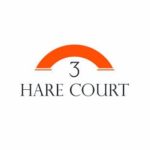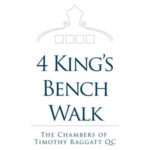Wills & Trusts Law Reports | Web OnlyA house was purchased in the joint names of the defendant and his son, the claimant. At least part of the reason for the claimant’s inclusion was that it allowed the defendant to benefit from a mortgage needed to finance the purchase. The TR1 bore an ‘X’ in Box 11 which appeared next to the words ‘the transferees are to hold the property on trust for themselves as tenants in common in equal shares’. The claimant sought a declaration that the property was held as described by Box 11 and an order for sale. The defendant maintained in a number of witness statements that the ticking of Box 1...
Context is everything when defining the common intention constructive trust. Aidan Casey QC and Tom Poole discuss recent case law Marr has changed the way courts should approach disputes about the beneficial ownership of family-owned investment property portfolios. It has been recognised since the decisions of the House of Lords in Pettitt v Pettitt [1970] …
Continue reading "Beneficial ownership: Marring the deal"
This post is only available to members.
Mark Pawlowski looks at how the courts calculate the parties’ beneficial shares when events post-acquisition give rise to a claim to an enlarged share in the jointly owned family home ‘The courts take a holistic approach to the question of the assessment of the parties’ respective shares, so that, although financial contributions play an important …
Continue reading "TOLATA 1996: A holistic approach"
This post is only available to members.
Mark Pawlowski examines recent case law on resulting trusts, the presumption of advancement and joint borrowing under a mortgage ‘The court reiterated the view, expressed in Gorman, that prima facie, if the purchase is financed in whole or in part on mortgage, the person who undertook liability for the mortgage repayments, as between joint owners, …
Continue reading "Trusts: Who owns what?"
This post is only available to members.
Naveed Ali outlines the development of the constructive trust principle to aid cohabitees ‘The court should establish the intentions of the parties with evidence; where intention cannot be inferred, the court may impute an intention which the parties may never have founded.’ The regulation of proprietary rights after a breakdown of marriage is extensive: the …
Continue reading "Constructive trusts: Keeping up with the Jones"
This post is only available to members.
Mark Pawlowski examines the continuing role of the resulting trust in the context of investment and family property ‘Where property was purchased as an investment (as opposed to a family home), the presumption of joint ownership does not apply.’ Although the resulting trust has played a lessening role as an appropriate mechanism for determining beneficial …
Continue reading "Trusts: Mixed messages"
This post is only available to members.
Richard Adams clarifies the current position on beneficial ownership in the event of relationship breakdown ‘What the case highlights of course is the importance of those in relationships of this nature to document clearly their intentions as to respective ownership, and indeed to do so prior to any investment being made.’ The Privy Council recently …
Continue reading "Jointly Held Assets: Owning it"
This post is only available to members.
Chris Bryden and Jyoti Wood analyse the Privy Council decision in Marr v Collie and the significance of a commercial aspect to a personal relationship ‘The Privy Council has made it abundantly clear that it is intention, not presumption, that matters.’ In Marr v Collie [2017] the Privy Council was concerned with an appeal in …
Continue reading "Cohabitants: Seeking clarity"
This post is only available to members.
Rupert Higgins considers some cases highlighting the problems with hastily created declarations of trust ‘A guide to defeating creditors is long overdue. So here, too late for Mrs Rahman but for the benefit of readers, is a bluffers’ guide to bluffing.’ As controversial political figures go, it would be hard to find a candidate in …
Continue reading "Beneficial Interests: Defeating creditors: a how (not) to guide"
This post is only available to members.
Graeme Fraser and Stephen Morrall consider the treatment of joint investments in properties and businesses by a cohabiting couple ‘The courts treat properties used as family homes and investment properties differently and are much more inclined to find a common interest constructive trust in relation to a family home.’ The volatile stock market, high property …
Continue reading "Cohabitants: An unequal partnership?"
This post is only available to members.









